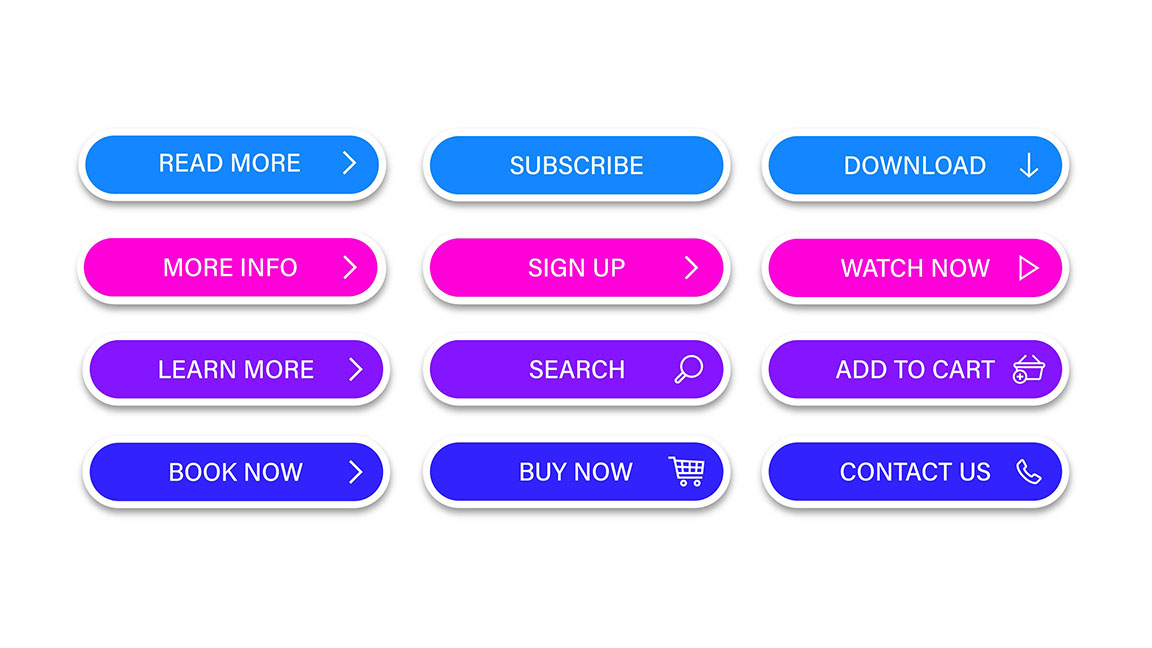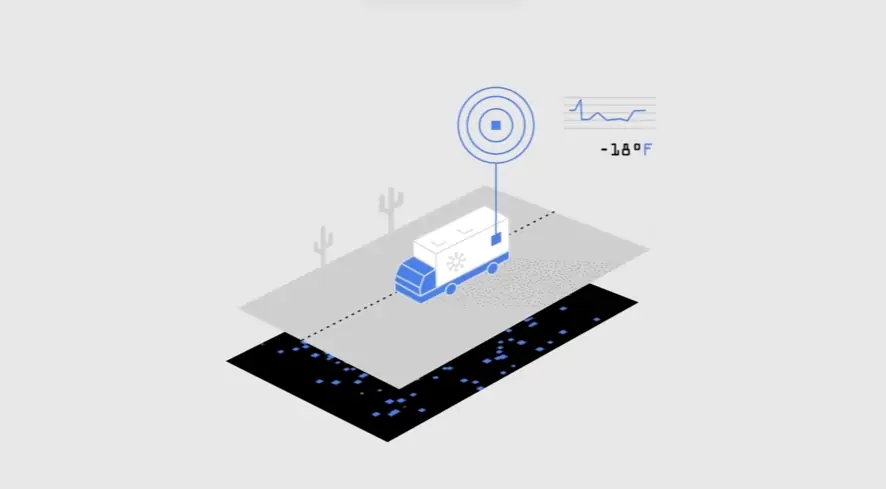Unleash the captivating Power of Video to transform your conversion rates! In today's digital landscape, where attention spans are fleeting, video emerges as the ultimate storytelling tool. It's more than just moving pictures; it's an immersive experience that connects with viewers on an emotional level, forging deeper brand loyalty and boosting purchase intent.
This article delves deep into the art of creating high-converting video ads, providing actionable insights and practical tips that you can implement immediately to elevate your brand's impact and drive unprecedented success.
Why Leveraging the Power of visual storytelling Can Drastically Improve Conversion Rates
Video is a powerful tool for storytelling. It engages multiple senses and facilitates a deeper understanding of your message than text alone. This increased engagement directly correlates to higher conversion rates as viewers are more likely to connect with and remember your brand.
Things to Plan:
- Define your target audience and tailor your story to resonate with their needs and desires.
- Craft a clear narrative with a beginning, middle, and end that highlights a problem, presents your solution, and showcases the positive outcome.
- Focus on evoking emotions that drive action, such as excitement, joy, or a sense of urgency.
- Utilize high-quality visuals that capture attention and reinforce your message.
How Video Ads Facilitate Deeper Emotional Connections Leading to Increased Brand Loyalty
Human beings are inherently emotional creatures. Video, with its ability to convey not just information but also feeling, offers a unique opportunity to connect with your audience on an emotional level. This deep connection fosters brand loyalty as viewers are more likely to trust and engage with brands that they feel understand them.
Things to Plan:
- Identify the key emotions you want your video ads to evoke and tailor your visuals, music, and voiceover accordingly.
- Showcase genuine stories and testimonials that highlight the human element behind your brand.
- Encourage interaction and dialogue with your audience through comments, polls, and social media engagement.
- Be transparent and authentic in your communication to build trust and foster long-term relationships.
Unveiling the Science Behind Why Video Consumption Drives Higher Purchase Intent Than Text
Studies have shown that the human brain processes visual information significantly faster than text. This explains why video content can more effectively capture attention and leave a lasting impact. As viewers understand your message more readily and connect with it emotionally, their intent to purchase naturally increases.
Things to Plan:
- Clearly communicate the value proposition of your product or service through concise and impactful visuals.
- Use demonstrations and explainer videos to highlight the key benefits and features of your offerings.
- Focus on making your videos engaging and easily digestible, avoiding overly technical language or complex concepts.
- Include clear calls to action that direct viewers to take the next step in the purchase process.
Building Trust and Credibility Through Engaging Video Content for Improved Sales Performance

In a world of information overload, credibility is a powerful currency. Video allows you to showcase your expertise and demonstrate your product's value in a way that traditional advertising simply can't. Building this trust with potential customers directly translates into increased confidence in their purchase decisions and a positive impact on sales performance.
Things to Plan:
- Leverage testimonials and case studies from satisfied customers to showcase the real-world impact of your product.
- Feature industry experts and thought leaders to reinforce your brand's authority.
- Utilize professional production quality to communicate that your brand is trustworthy and invested in its products and customers.
- Be transparent and open in your communication, addressing any potential concerns or objections directly.
Capturing Attention in a Noisy Digital Landscape
With the constant bombardment of online information, it's increasingly difficult for brands to capture the attention of their target audience. Video ads, with their dynamic format and ability to engage multiple senses, provide a powerful solution for cutting through the noise and standing out from the crowd.
Things to Plan:
- Start your video with a strong hook that grabs viewers' attention in the first few seconds.
- Use vibrant visuals and engaging animations to keep viewers visually captivated.
- Incorporate elements of surprise and curiosity to pique interest and encourage continued viewing.
- Tailor your video ads to the specific platforms where they'll be displayed, considering factors such as aspect ratio and audience behavior.

Mastering the Art of the Hook
In the realm of online video, the first few seconds are absolutely crucial. You have a fleeting window to capture the viewer's attention before they scroll past. Crafting a powerful hook that immediately draws them in is the key to ensuring your message gets heard.
Things to Plan:
- Start with a compelling question or statement that piques the viewer's curiosity.
- Use visually striking imagery that immediately grabs their attention.
- Highlight a common pain point or problem that your target audience relates to.
- Tease an intriguing benefit or solution that encourages them to keep watching.
Building Narrative Tension and Release to Keep Viewers Engaged Throughout Your Video Ad

Just as a good story keeps you on the edge of your seat, a well-crafted video ad utilizes narrative tension and release to maintain viewer engagement. This means creating a sense of anticipation and then delivering a satisfying resolution that leaves the viewer feeling fulfilled and motivated to take action.
Things to Plan:
- Introduce a challenge or problem that your target audience can relate to.
- Showcase your product or service as the solution to this problem.
- Demonstrate how your product or service effectively addresses the challenge, highlighting the positive outcome.
- End with a clear call to action that encourages viewers to take the next step.
Leveraging the Power of Storytelling to Make Your Brand and Message Memorable

Storytelling is an innate human characteristic – we connect with stories on a fundamental level. When you incorporate storytelling into your video ads, you're tapping into this innate desire and creating a more meaningful and memorable experience for your viewers.
Things to Plan:
- Identify a core message that you want your audience to take away.
- Craft a narrative around this message that incorporates relatable characters and scenarios.
- Utilize authentic visuals and emotions that connect with your audience on a deeper level.
- Conclude your story with a call to action that aligns with the overall message and motivates viewers to take action.
Creating Authentic and Relatable Video Ad Scripts that Drive Emotional Connections
Authenticity is paramount in today's marketing landscape. Viewers are discerning and can easily detect when a brand is not being genuine. Creating video ads that feel authentic and relatable builds trust and fosters emotional connections that drive conversions.
Things to Plan:
- Utilize real people and stories in your video ads rather than relying solely on actors or staged scenarios.
- Speak in a natural and conversational tone, avoiding overly formal language or jargon.
- Focus on addressing real-world challenges and concerns that your target audience can relate to.
- Encourage interaction and dialogue with your audience by responding to comments and questions authentically.
Clearly Defining Your Video Ad Objectives and Crafting a Script Aligned with Your Goals
Before you start crafting your video ad script, it's essential to establish clear objectives for your campaign. Are you looking to drive website traffic, generate leads, increase brand awareness, or promote a specific product? Your script should be explicitly designed to support and achieve these objectives.
Things to Plan:
- Define specific, measurable, achievable, relevant, and time-bound (SMART) goals for your campaign.
- Determine your target audience and what stage of the buyer's journey they're likely to be in.
- Craft a script that directly addresses your target audience's needs and motivations at that particular stage.
- Incorporate a strong call to action that aligns with your objectives and motivates viewers to take the desired action.
Weaving Product Benefits and Solutions Seamlessly into a Compelling Narrative
Effective video ads are able to showcase their product or service without feeling overly salesy. The key is to seamlessly weave the product's benefits and solutions into a compelling narrative that genuinely engages the viewer. This approach feels more authentic and fosters a higher level of trust and buy-in.
Things to Plan:
- Identify the key problems that your product solves for your target audience.
- Develop a story that showcases how your product effectively addresses these challenges.
- Use visuals and demonstrations to demonstrate the product's benefits in a concrete way.
- Ensure that the product integration feels natural and relevant to the story being told.
Utilizing Powerful Calls to Action That Motivate Viewers to Take the Next Step

A clear and compelling call to action is a critical element of any high-converting video ad. This is your opportunity to tell viewers what you want them to do next, whether it's visiting your website, signing up for a free trial, or making a purchase.
Things to Plan:
- Clearly and concisely communicate the desired action that you want viewers to take.
- Create a sense of urgency to encourage immediate action (e.g., using limited-time offers).
- Make the call to action visually prominent and easily accessible within the video (e.g., using end screens or annotations).
- Align your call to action with your campaign objectives and ensure that it is relevant to the content of your video ad.
Testing and Iterating Your Video Ad Scripts to Optimize for Maximum Conversion
Crafting compelling video ad scripts is crucial for engaging viewers and driving conversions. But how do you know which script will resonate most effectively with your target audience? The answer lies in rigorous testing and iteration. This process involves creating multiple versions of your script, experimenting with different messaging, calls to action, and storytelling approaches, and then analyzing the performance of each version to identify what drives the highest click-through rate (CTR) and conversion rates.
Things to Plan:
- Developing a clear testing framework: Determine what metrics you will track (e.g., CTR, watch time, conversion rate) and how you will measure success. You might consider A/B testing different video ads for optimal results.
- Crafting multiple script variations: Experiment with different headlines, value propositions, storytelling techniques, and calls to action to discover what captivates your audience and compels them to click. Aim for high-converting video content.
- Analyzing data and iterating based on results: Utilize platform analytics to monitor the performance of each script version. Identify patterns, determine which elements drive higher engagement, and iterate on your scripts accordingly to optimize for maximum conversion.
- Documenting your findings for future campaigns: Maintain a record of your testing process, including the variations you tested, the results achieved, and the insights gained. This valuable data will inform future video ad script development and streamline your optimization efforts.
Understanding the Psychology of Color and its Impact on Viewer Emotion and Engagement
Color plays a profound role in influencing human emotions and behaviors, making it a critical consideration when crafting high-converting video ads. By understanding the psychological impact of different colors, marketers can strategically leverage them to evoke specific feelings, capture attention, and enhance viewer engagement.
Things to Plan:
- Researching the psychological associations of various colors: Each color evokes unique emotions and connotations. Blue, for instance, often conveys trust and stability, while red signifies excitement and urgency.
- Aligning color choices with your brand identity and messaging: Select colors that reflect your brand's personality and resonate with your target audience.
- Using color contrasts to create visual interest and hierarchy: Employing contrasting colors can help draw attention to specific elements within your video ad, such as the call to action button. Effective color contrast improves readability and guides viewers' eyes towards key information.
- Considering cultural context when selecting color palettes: Color associations can vary across cultures. Be mindful of your target audience's cultural background and adjust your color choices accordingly to avoid any unintentional misinterpretations within your video ads.
The Importance of High-Quality Visuals and Crisp Audio in Enhancing Perceived Value

In the realm of video advertising, production value matters significantly. High-quality visuals and crisp audio elevate the perceived value of your brand and product, signaling professionalism and credibility to viewers. Investing in high-quality production elements directly translates to increased engagement, a positive brand perception, and improved conversion rates. You'll need to focus on aspects that contribute towards creating high-converting video content.
Things to Plan:
- Choosing the right video equipment for capturing professional-grade footage: If you are not outsourcing production, invest in a high-quality camera, lighting equipment, and audio recording gear to ensure that your footage and sound meet professional standards and positively influence video click-through rates.
- Paying meticulous attention to lighting, composition, and framing during filming: Ensure your videos are well-lit, visually balanced, and framed effectively to captivate viewers and hold their attention throughout the duration of the ad, thus improving video ad conversion metrics.
- Utilizing professional editing software to enhance video quality and flow: Leverage professional-grade video editing software to polish your footage, optimize transitions, incorporate captivating animations and effects, and create a seamless and engaging viewer experience to drive better video CTR.
- Ensuring audio clarity and eliminating distracting background noise: Crisp and clear audio is essential for viewer comprehension and engagement. Pay close attention to audio levels, remove background noise, and potentially invest in voiceover talent for a polished final product to improve video conversions.
- Conducting quality assurance checks to identify and rectify any technical issues: Before deploying your video ads, perform rigorous quality assurance checks to ensure optimal video and audio quality across different devices and platforms.
Incorporating Eye-Catching Animations and Graphics to effectively communicate Your Message

Animation and graphics offer powerful tools for simplifying complex information, creating visual interest, and ultimately driving higher video ad conversion rates. These elements can explain product features, illustrate data points, and even evoke emotions, enhancing the viewer's understanding and engagement with your message.
Things to Plan:
- Define the Purpose of Animation/Graphics: Ensure each element serves a clear purpose in communicating your message or brand story. Avoid unnecessary fluff.
- Match the Style to Your Brand: Maintain consistency in your animation style and graphics, ensuring they align with your brand's visual identity.
- Keep it Concise and Focused: Animations should be concise and relevant to the point you're trying to make, avoid overwhelming the viewer.
- Prioritize Clarity over Complexity: Even complex concepts can be explained through clear and simple animations. Prioritize accessibility for a broader audience.
- Seamlessly Integrate Animations with Live-Action Footage (if applicable): Transitions between animation and live-action should be smooth and natural to avoid jarring the viewer.
Utilizing Text Overlays Strategically to Emphasize Key Points and Improve Comprehension
Text overlays are invaluable in video marketing. They reinforce key messages, clarify complex points, and ensure your message gets across even when audio is off – a common scenario on social media. Well-placed and styled text overlays can significantly improve comprehension and enhance the overall viewer experience.
Things to Plan:
- Choose a Readable Font: Select a font that is legible even at smaller sizes on different devices. Avoid overly decorative or stylized fonts.
- Optimize Font Size for Mobile Viewing: Ensure text overlays are easily readable on smaller screens, considering mobile optimization is critical for high CTR videos.
- Utilize Contrasting Colors: Make sure the text stands out clearly against the background video, using contrasting colors or adding a subtle shadow/outline to the text.
- Use Text Sparingly and Purposefully: Avoid overwhelming the screen with text. Use overlays only to highlight essential information or key takeaways.
- Time Text Overlays with Audio: Synchronize text with narration or music for better readability and engagement.
Maintaining Brand Consistency in Visuals and Messaging Across all Video Ads

Building a strong brand presence and achieving high conversion video ads necessitates visual and messaging consistency across all your video content. This cohesive approach ensures brand recognition, builds trust, and reinforces your key brand messages across different platforms and campaigns.
Things to Plan:
- Develop a Clear Brand Style Guide for Video: Define your brand colors, fonts, animation styles, logo usage, and other visual elements that will be used in your videos.
- Establish a Consistent Tone of Voice: Determine the appropriate tone of voice for your brand in videos (e.g., humorous, informative, serious) and maintain it across all your content.
- Use Brand Elements Strategically: Incorporate your logo, brand colors, and other elements consistently across your video ads, but avoid overuse that distracts from the core message.
- Tailor Messaging to Specific Platforms but Retain Core Themes: Adjust the message delivery for different platforms (e.g., short and snappy for TikTok, more in-depth for YouTube) while retaining your core brand message and values.
- Regularly Review Video Content for Brand Alignment: Implement a process for reviewing new videos to ensure they are adhering to the brand guidelines you have established.
Harnessing the Power of Music and Sound Effects to Enhance the Emotional Impact
Music and sound effects significantly contribute to the overall impact and effectiveness of your video ads. They have the ability to evoke emotion, set the mood, emphasize actions, and build brand identity. When used effectively, these audio elements create a more immersive and engaging experience for the viewer.
Things to Plan:
- Align Music with the Target Audience and Brand Image: Consider the musical tastes of your target audience and select music that resonates with their preferences and complements your brand image.
- Choose Music that Evokes the Desired Emotion: Different genres and musical styles create various emotional responses (e.g., upbeat for excitement, mellow for calmness). Select music accordingly.
- Utilize Sound Effects for Emphasis and Storytelling: Well-placed sound effects can highlight key moments in the video, draw attention to specific elements, and contribute to the overall narrative.
- Ensure Professional Audio Mixing and Mastering: Professional audio editing and mastering ensures that music and sound effects are balanced and of high quality. Poor audio mixing can significantly detract from the viewing experience.
- Be Mindful of Music Licensing and Copyright: Ensure that you have the necessary rights to use any music or sound effects in your video. Explore royalty-free music libraries or secure appropriate licenses for commercial use.
Creating a Sense of Urgency Through Visual Cues and Time-Limited Offers
Instilling a sense of urgency can be a powerful technique in driving immediate action and increasing video conversion rates. By implementing visual cues and highlighting time-limited offers, you motivate viewers to engage with your call to action before it's too late, capturing their attention and prompting faster decisions.
Things to Plan:
- Incorporate Countdown Timers: Visually display countdown timers that explicitly show the remaining time for a limited-time offer.
- Use Phrases that Convey Scarcity: ""Limited Time Offer, Don't Miss Out, While Supplies Last all create a sense of urgency around your offer.
- Visually Highlight Limited Availability: Use flashing icons, animated text, or shrinking graphics to draw attention to the scarcity of an offer or product.
- Utilize Flash Sale Graphics and Animations: If you're running a flash sale, incorporate themed visuals to grab attention and emphasize the time-sensitive nature of the promotion.
- Test Different Urgency Techniques: Experiment with various approaches to find what resonates best with your audience and generates the highest conversion rates for your video ads.
Optimizing Video Length for Platform and Audience Attention Spans

Click-through rates for video ads are heavily influenced by video length. Capturing and retaining viewer attention in today's fast-paced digital environment requires adapting your video length to the specific platform and the attention span of your target audience.
Things to Plan:
- Research Platform-Specific Best Practices: Video length recommendations vary across platforms (e.g., short for TikTok and Instagram, longer for YouTube). Conduct research and adapt your videos accordingly.
- Consider Your Target Audience's Viewing Habits: Tailor video length to your audience's likely attention span. If you're targeting a busy professional audience, keep videos concise. For entertainment content, longer videos might be acceptable.
- Front-Load the Most Important Information: Ensure that your key message or value proposition is communicated within the first few seconds to grab viewer attention early.
- Maintain a Fast Pace and Cut Out Unnecessary Fluff: Avoid unnecessarily lengthy intros or drawn-out scenes. Keep your video engaging with a quick pace and focus on delivering the most compelling information efficiently.
Experimenting with Different Video Formats (e.g., Explainer, Testimonial, Product Demo) to Find What Resonates
The realm of video advertising encompasses a wide variety of formats, each suited for unique purposes and audience preferences. By exploring various formats, like explainer videos, customer testimonials, or product demos, you can identify what best resonates with your audience and generates optimal conversion rates for video ads.
Things to Plan:
- Analyze Your Target Audience and Objectives: Different video formats suit different purposes. Explainer videos are great for introducing complex concepts, testimonials build trust, and product demos showcase functionality.
- Consider the Stage of the Customer Journey: Tailor your video format to the user's position in their buyer journey. Explainer videos work well for awareness, testimonials for consideration, and product demos for decision.
- Leverage Storytelling Elements in Your Videos: No matter the format, incorporate engaging storytelling elements to keep viewers hooked and connect with your brand emotionally.
- Test and Analyze the Performance of Each Format: Conduct A/B testing with different video formats to see which ones generate higher click-through rates, engagement, and conversions for your target audience.

Identifying Your Ideal Customer Profile and Tailoring Video Ads to Their Needs and Interests
Reaching the right audience is paramount for maximizing the ROI of your video ad campaigns. By meticulously identifying your ideal customer profile and deeply understanding their needs and interests, you can craft highly targeted video ads that speak directly to their pain points and desires. This precision targeting minimizes wasted ad spend and fosters stronger engagement.
Things to Plan:
- Conduct Market Research: Dive deep into your target audience demographics, psychographics, behaviors, and preferences to develop a detailed understanding of their needs and pain points.
- Create Buyer Personas: Develop detailed buyer personas that represent your ideal customers. These profiles serve as valuable blueprints for crafting compelling and highly targeted video content.
- Address Specific Needs and Pain Points in Your Videos: Focus on directly addressing the challenges and aspirations of your target audience in your video ads. Showcase how your product or service provides tailored solutions.
- Highlight Features that Align with Audience Interests: Emphasize the product or service features that directly align with the preferences and priorities of your ideal customers.
- Tailor Language and Visuals to Your Target Market: Speak the language of your target audience and adapt your video's tone, visuals, and style to resonate with their unique culture and aesthetic preferences.
Utilizing Platform-Specific Targeting Options to Reach the Right Audience with Precision
Each social media platform and video advertising platform offers unique targeting capabilities. By harnessing these options, you can laser-focus your campaigns and maximize click-through rates for video ads and conversion. Precision targeting ensures that your video reaches the specific user segments most likely to engage with your message and take desired actions.
Things to Plan:
- Thorough Understanding of Platform Demographics: Familiarize yourself with the demographics, interests, and behaviors of users on each platform to determine which platforms best align with your target audience.
- Leverage Demographics, Interests, and Behavior Targeting: Most platforms offer options to target users based on age, gender, location, interests, online behavior, and more.
- Experiment with Retargeting and Custom Audiences: Utilize data from website visits, app usage, and other interactions to create retargeting audiences and tailor ads to users who have shown prior interest.
- Stay Updated on Platform Updates and New Targeting Options: Advertising platforms constantly evolve, introducing new targeting capabilities. Keep abreast of these updates to continuously improve your targeting accuracy.
- Use Platform-Specific Ad Managers: Utilize native platform ad managers for optimal control over targeting options, bidding strategies, and ad placements.
Retargeting Website Visitors and Cart Abandoners with Personalized Video Ads
Retargeting helps businesses re-engage users who have shown previous interest, ultimately driving higher video conversion rates. A cart abandonment retargeting video ad, for instance, could offer a discount, showcase product benefits, or remind the user about the items left in their cart. Effective retargeting video content strengthens the relationship between brand and customer.
Things to Plan:
- Segment your audience based on website behavior, such as product page visits, form submissions, or time spent on site.
- Create compelling retargeting video ads that offer exclusive discounts, free shipping, or other incentives to entice users to convert.
- Set clear frequency caps to avoid overwhelming users with your retargeting video ads, striking a balance between reminders and overexposure.
- Experiment with different retargeting video ad durations to determine what resonates best with your target audience.
Expanding Your Reach by Targeting Users Similar to Your Existing Customers

Creating lookalike audiences allows marketers to target new potential customers who share characteristics with their most valuable customers. Utilizing demographic and behavioral data helps create audiences who are likely to engage and convert, effectively lowering advertising costs and improving overall campaign performance.
Things to Plan:
- Upload your existing customer data (email lists, CRM data) to the advertising platform of your choice (Facebook, Google Ads, etc.).
- Ensure the quality of your seed audience data by removing duplicate or inactive entries to improve the accuracy of the lookalike audience generated.
- Define the lookalike audience size based on your desired reach and campaign budget. Smaller lookalike audiences are generally more targeted, while larger audiences provide broader reach.
- Experiment with multiple lookalike audience sizes and variations to identify the most responsive segments for your video ad campaigns.
Geographic Targeting: Optimizing Ad Delivery Based on Location for Increased Relevance
Geographic targeting enhances the relevance of your video ads by specifically targeting locations relevant to your business. Imagine launching a hyperlocal campaign. A conversion-focused video ad highlighting local specials for a restaurant chain might leverage proximity targeting to reach users within a certain radius. The relevance boosts engagement and conversion probability.
Things to Plan:
- Analyze sales data, website traffic, or demographic information to identify geographical areas where your target market is concentrated.
- Research cultural nuances, local trends, or community events in the chosen geographic areas to personalize video ad messaging for greater relevance.
- Consider geofencing, which enables hyper-targeted delivery of video ads to users within a specific geographic radius, often near a business location or event venue.
- If you have multiple brick-and-mortar locations, consider tailoring your video ad messaging to promote localized offers or events.
Placing Your Video Ads on Websites and Channels Relevant to Your Niche

Contextual targeting allows you to align your video ad campaigns with the content your target audience is consuming. This ensures greater relevance, user attention, and stronger branding. High-converting video content becomes much easier to create with insights into audience interest based on their consumption habits.
Things to Plan:
- Thoroughly research relevant keywords, topics, and websites that resonate with your target audience.
- Choose relevant websites and channels frequented by your audience, ensuring that the platform offers high-quality and contextually relevant ad inventory.
- Analyze the engagement rates, user demographics, and ad inventory availability of potential contextual placement options before committing your ad budget.
- Use brand lift studies to gauge the effectiveness of your video ad campaign and quantify how well your message resonates with the specific contexts.
A/B Testing Different Targeting Parameters to Identify the Most Effective Combinations
A/B testing for different audience targeting parameters in video advertising is about analyzing audience responses and refining strategies for optimal reach and click-through rates (CTR). By understanding how different user segments respond to your video ads, you can gain insights into ideal target markets, helping achieve specific campaign objectives with higher efficiency.
Things to Plan:
- Isolate specific audience targeting variables like age, demographics, interests, or online behaviors to compare their respective performance against control groups.
- Allocate a consistent budget to each variation of the A/B test to avoid any significant influence from budget discrepancies.
- Run A/B tests for a sufficient duration to collect adequate data and make statistically significant observations about the performance of each variable tested.
- Analyze metrics like CTR, watch time, and conversion rate to gauge the performance of each targeted variable against its control counterpart.
Crafting Powerful Video Ad Calls to Action that Drive Conversions

Utilizing Clear and Concise Language that Leaves No Room for Ambiguity
Crafting clear, unambiguous calls to action (CTAs) within video ads helps reduce user hesitation and significantly enhances video click-through rates. Users don't want puzzles or to feel overwhelmed in ads. Simple, persuasive language and precise instructions ensure your audience understands what action to take, and with visual reinforcement, it drives successful outcomes.
Things to Plan:
- Start with a strong action verb such as Learn More, Shop Now, Download Now, or Get a Free Quote.
- Eliminate jargon or technical terms that your target audience may not understand.
- Include your unique value proposition in your CTA, making it irresistible for your viewers. For example, Start your 30-day Free Trial or Get Your Free Personalized Consultation.
- Test different CTA phrases in your video ads to find the wording that generates the highest click-through rates and conversions.
Providing Incentives and Special Offers to Motivate Viewers to Convert
Providing incentives in your video ads is about driving click-through rates (CTR) through valuable user engagement. Users often respond positively to perks like exclusive discounts, coupons, or free add-ons, making an immediate and measurable impact on conversions and overall CTR metrics.
Things to Plan:
- Carefully assess the budget and determine if there is scope for incentives or discounts based on anticipated customer lifetime value to avoid any unsustainable long-term commitment.
- Identify which discounts, offers, and giveaways truly engage your target market with A/B testing and experimenting. Don’t always default to discounts; perhaps premium shipping is more persuasive?
- Keep it concise and easy to claim within the timeframe of the ad: users may become confused or hesitant with too much information. Clearly define steps for access and avoid making it overly complex.
Making Your Call to Action Visually Prominent and Easy to Find
Highlighting a call to action (CTA) button visually ensures viewers know exactly where to click, leading to an enhanced click-through rate and effective navigation of your site. Integrating compelling visual design makes a CTA more clickable, directing action directly where it can create conversions.
Things to Plan:
- Choose bold or vibrant colors that contrast strongly with the video ad's background and make it visually distinct from the main video content to enhance visibility and appeal.
- Utilize motion graphics such as animation or a zoom-in effect to draw viewer attention towards your CTA. This emphasizes the desired user action effectively, increasing interaction potential.
- Avoid placing your CTA amidst excessive clutter or where it might become masked by screen elements. Place it strategically within high visibility areas such as at the end of your ad, centrally in the middle of the screen during key messaging points, or as a prominent side banner overlay on longer ads.
Utilizing End Screens and Cards to Extend Engagement and Drive Conversions
End screens and cards within video advertising boost conversions and deepen user engagement by guiding viewer attention towards specific URLs, products, or actions. Strategically timed reveals after peak user interest maximizes the opportunity for successful clicks that transform into customers and improve the overall return on your video content campaign investment.
Things to Plan:
- Decide whether end screen integration is most effective with a strong focus on the single most important CTA or a diverse option list of choices catered to a varied audience response pattern.
- Plan in advance and shoot video content dedicated to end-screen integration, aligning the messaging carefully with CTA goals so it flows naturally rather than appearing tacked-on.
- Conduct thorough analysis of post-implementation engagement: monitor clicks per URL shown, track the relationship between watch time versus card clicks, and learn which messages lead to further audience interaction with your brand via YouTube channel subscriptions or likes on individual videos.
A/B Testing Different Call to Action Phrasing and Placement to Maximize Impact
A/B testing helps optimize phrasing, format, placement, and duration by examining click-through rates (CTR) for multiple CTA variations on video ads. It guides marketers toward language and visual approaches that lead to tangible, measurable engagement improvements. You could test variations of the key phrase used, the number of words displayed in text overlay formats, and button versus text formatting, analyzing differences in CTR to pinpoint high-impact design elements for video ads.
Things to Plan:
- Create multiple iterations of a video ad with the only variable being the phrasing of the call to action. For example, Learn More Now, Get Your Free Trial Today, and ""Discover The Difference Now.
- Consider experimenting with the placement of the CTA within the video ad. Place it in the middle, the beginning, and the end and test which location generates higher click-through rates and conversions.
- Use A/B testing platforms that offer integrated heat maps for detailed insight into user interaction with different video ads, pinpoint where users focus most during your video ads, and find optimal placement for a call to action.
Adding Captions and Subtitles to Enhance Inclusivity
Accessibility within video ad design goes beyond reaching the broadest audience. With hearing loss estimated to impact nearly a billion individuals globally in the next decade, adding subtitles enhances conversion potential. Videos with captions achieve higher watch-time averages and demonstrate better comprehension of brand message recall, thus amplifying your CTA effectiveness when more people perceive the content correctly.
Things to Plan:
- Ensure a well-structured process for accurately integrating subtitles and captions is created during content planning. Post-production subtitle-addition requires attention to timing and error correction so the captions match the video message accurately without hindering visuals.
- Don't treat captions as afterthoughts for an optimized video for high conversion rates. Caption creation may influence budget when choosing to create accurate language options with translations beyond simply transcribed text.
- Employ caption placement techniques that do not hinder message delivery. The use of white text with a transparent, contrasting overlay in color is visually minimal yet increases clarity during video viewing.
Utilizing Video Analytics to Track Performance and Identify Areas for Improvement
![]()
Video analytics plays a crucial role in enhancing click-through rates. Data reveals patterns about which viewers clicked on specific content based on interests, suggesting modifications for improving ad campaign performance over time. CTR is the start of a viewer journey and analyzing behavior afterward uncovers roadblocks or success within a marketing funnel's structure.
Things to Plan:
- Dive beyond views when measuring impact. Examine audience retention graphs and determine precisely where viewers skip ahead or stop. A 10-second click matters less if they never finish the entire message.
- Plan A/B testing from initial creation rather than retroactively deciding to tweak variables. Integrate data capture processes from campaign conception onward, knowing you'll compare CTR and watch time data to optimize toward a successful video campaign goal.
- Plan in advance to record video variations in naming and catalog them efficiently so analytics reports reflect campaign differences readily for streamlined future review when analyzing data to isolate what works best within specific ad content style options.
Continuously Monitoring and Adjusting Your Video Ad Campaigns Based on Data
Ongoing assessment of performance through metrics such as click-through rates, conversion tracking, and feedback evaluation enables continual video ad campaign refinement. Optimizing continuously in response to feedback gathered from viewers and platform engagement stats fosters stronger brand storytelling via video and higher ROI per video ad due to improved audience fit over time.
Things to Plan:
- Design a system of key performance indicators (KPIs) tied specifically to campaign objectives: are clicks the primary goal, or is brand awareness the priority in the short term? Having quantifiable metrics to measure progress enables clarity on optimization direction.
- Schedule regular check-ins, whether weekly or even more frequently based on campaign run duration and the velocity of audience feedback to spot trends early on, avoiding costly delays when tweaks need quick deployment.
- Explore advanced optimization options within chosen platform ad creation settings. Automated budget pacing features and algorithm-driven A/B test tools are often readily available within ad interfaces for faster analysis response when real-time modifications need quick testing with diverse audiences during video runs.
Conclusion:
As we've explored, the power of video in the digital realm is undeniable. Its ability to capture attention, evoke emotions, and build trust makes it an invaluable tool for businesses looking to increase conversions and build stronger relationships with their audience. Remember that crafting compelling video content requires careful planning and attention to detail.
Consider your audience's needs, their preferred platforms, and the story you want to tell. Authenticity is key – create content that feels genuine, relatable, and valuable to the people you are trying to reach.
Furthermore, optimizing your videos for maximum conversion requires meticulous attention to elements such as captivating hooks, impactful calls to action, and strategic keyword integration.
Don't underestimate the power of music and visuals in evoking emotional responses and driving engagement. Also, recognize that testing and iteration are paramount to discovering what resonates most with your audience and drives the best results. Each platform, each user segment may respond differently to varied video approaches.
Embrace the process of experimentation and refinement to optimize your videos for maximum conversion. This journey towards mastering video advertising is not a race but a constant learning curve.
As the digital landscape evolves, so will the techniques for creating high-converting video content. Stay informed, adapt your strategies, and most importantly, keep your audience at the heart of your video creations. With persistence, creativity, and a commitment to continuous improvement, you can unlock the true power of video for your brand, building meaningful connections with your customers and driving the growth you envision.













